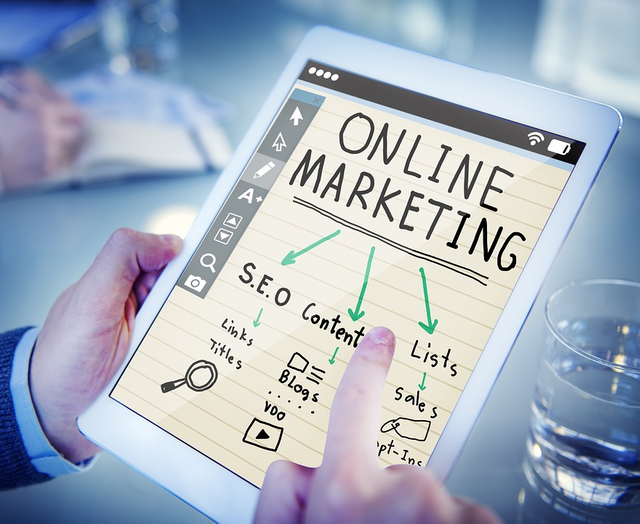[Ten Simple Ideas] The Ernst & Young Business Plan Guide: Chapter by Chapter - Chapter 8 - Products and Services
In this series of articles, I will post ten simple ideas from chapters in The Ernst & Young Business Plan Guide (3rd edition). This sixth post in the series brings out ten simple ideas from Chapter 8, Products and Services.
Introduction

Image Source: pixabay.com
License: CC0, Public Domain

Image Source: pixabay.com
License: CC0, Public Domain
As with all of the chapters in part 2 of The Ernst & Young Business Plan Guide (3rd edition), chapter 8 begins by describing the characteristics of of a good business plan, then moves on to an example business plan from Good Foods Incorporated (GFI), and finally offers some commentary of the strengths and weaknesses of GFI's business plan. This particular chapter focuses on the Products and Services section of the business plan.
One key idea from this chapter includes the fact that the objective of the Products and Services section of the business plan is to describe the products as simply and concisely as possible and another is that the products and services provide the foundation for all other aspects of the business. Finally, the description of the products and services should include tangible and intangible factors, and it should cover the product's description, it's use and appeal, and also the product's stage of development.
The remainder of this blog post describe ten simple ideas from the chapter in more detail, and offer some personal commentary on each of them.

1.) For this section of the business plan, the objective is just to describe the nature of the business offerings as concisely as possible.
Business strategies and opportunities will be identified in the marketing section of the business plan and Research and Development details will be described in the Operations section. The Products and Services section lays the ground work for those sections with a clear, concise description that's written to draw out a desire for the reviewer to dig into the following sections. In this section, the reviewer should learn what the business will be doing, why it is appealing to the market place, and what the high level road map looks like.
2.) In order to succeed, a business needs a compelling set of products and services.
The authors note that the products and services section comes before marketing, operations, and other sections of the business plan because compelling products and/or services are fundamental requirements for any business. You can have the best marketing and operations plans, but there has to be an underlying goal for those aspects of the business. Marketing, operations, and other aspects only exist to support the product line.
3.) Communicate the characteristics and appeal of the products and services in a simple and clear fashion.

Image Source: pixabay.com
License: CC0, Public Domain

Image Source: pixabay.com
License: CC0, Public Domain
The entrepreneur is almost certainly more familiar with the field than the reviewer, so the business plan needs to start with the basics in a way that the reviewer will understand. The authors suggest including things like the physical description, the use and appeal of the product, and its stage of development. Some tips are given to further illuminate these facets of the business.
The physical description, for example, can be augmented with photographs or diagrams. The use and appeal should describe unique aspects of the product, and it should consider both tangible and intangible factors. The stage of development can be illuminated by describing things like the product's readiness for market, and high level details about its future evolution (details about Research and Development are reserved for the operations section.)
4.) Augment the physical description with photographs or diagrams.
As they say, "a picture is worth a thousand words." Supplementing dense prose with photographs and diagrams that can help the reviewer understand the business at a glance can be invaluable for the business and the reviewer. In the case of a physical product, photographs are likely to be helpful. In the case of services, diagrams may be more useful.
5.) Elaborate on the product's use and appeal with tangible and intangible factors.
When the physical description is complete, the entrepreneur should tell the reviewers how the product will be used. This is the opportunity to make the product seem compelling by describing its unique features and describing its market appeal. The appeal may include tangible factors like speed, low cost, or efficiency; or it may include intangible factors like beauty or desirability.

Image Source: pixabay.com
License: CC0, Public Domain

Image Source: pixabay.com
License: CC0, Public Domain
6.) Describing a product or service's stage of development helps investors to determine how the product/service fits into their desired time horizon.
The details about research and development should be reserved for the operational section of the business plan, but the Products and Services section should give enough information for the investor to see a sort of road map to guide expectations for their return on investment (ROI).
7.) Augment the reviewer's appreciation by offering insights that are not easily included in a business plan.
Examples of these sorts of insights include samples, prototypes, or live demonstrations.
8.) Testimonials can also be helpful.
Testimonials would not be included in the Products and Services section, but the idea is covered in this chapter. The authors suggest including lists of experts or letters with favorable commentary as supplemental reports or in an appendix to the business plan.
9.) Categorize product and service lines of business.
The book offered very little commentary about GFI's business plan for this section, except to say that it was strong and that it laid out a broad array of products in a concise way. One technique that I noticed them using to accomplish this was to organize their list of food products into groups such as breakfast, lunch, and dessert.
10.) Implement a notation system to quickly convey the stage of development to a reader.
This is another idea that I noticed in GFI's example business plan, although the authors of the book did not draw attention to it. GFI used the '*' character in the product list to denote products that were still under development, where products without a '*' are ready for market. This enables the reader to know at a glance which products are production ready and which ones are not.

Conclusion

Image Source: pixabay.com
License: CC0, Public Domain

Image Source: pixabay.com
License: CC0, Public Domain
Thank you for taking the time to read this article.
Some of the key points that we covered include the fundamental importance of the product/service line as the foundation for other aspects of the business, and the notion that the Products and Services section of the business plan should be written in a way that is understandable for a reviewer with less knowledge about the field. The chapter also mentioned that the section should include tangible and intangible information about the product, including its description, its use and appeal, and its stage of development.
For more information, I highly recommend reading the text itself: The Ernst & Young Business Plan Guide (3rd edition)
Finally, it now occurs to me that I should probably note that I am not affiliated in any way with Barnes and Noble, the authors, or the publishers of the book. I linked to a copy of the book on the Barnes and Noble site more or less at random, and I don't particularly endorse that site over any other site where you might purchase it.
45% of the rewards from this post will go to the Rustin Golden Knights Marching Band

Previous Articles in the series
Part I: The purpose of a business plan
- [Ten Simple Ideas] The Ernst & Young Business Plan Guide: Chapter by Chapter - Series Overview and Chapter 1
- [Ten Simple Ideas] The Ernst & Young Business Plan Guide: Chapter by Chapter - Chapter 2 - Who Reads the Business Plan?
- [Ten Simple Ideas] The Ernst & Young Business Plan Guide: Chapter by Chapter - Chapter 3 - Legal forms of a business
- [Ten Simple Ideas] The Ernst & Young Business Plan Guide: Chapter by Chapter - Chapter 4 - Due Diligence
Part II: An in-depth look at a business plan
- [Ten Simple Ideas] The Ernst & Young Business Plan Guide: Chapter by Chapter - Chapters 5-7 - Contents, Executive Summary & Company Description
- This Post: [Ten Simple Ideas] The Ernst & Young Business Plan Guide: Chapter by Chapter - Chapter 8 - Products and Services
Thank you for your time and attention.

Sign up for your own Steem account with this invitation from busy.org - https://busy.org/i/@remlaps.
As a general rule, I up-vote comments that demonstrate "proof of reading".

Steve Palmer is an IT professional with three decades of professional experience in data communications and information systems. He holds a bachelor's degree in mathematics, a master's degree in computer science, and a master's degree in information systems and technology management. He has been awarded 3 US patents.

Steve is a co-founder of the Steemit's Best Classical Music Facebook page, and the @classical-music steemit curation account.
| Follow: @classical-music | Follow: @classical-radio | Classical Music discord invitation: https://discord.gg/ppVmmgt |  Classical Music Logo by ivan.atman Classical Music Logo by ivan.atman |
